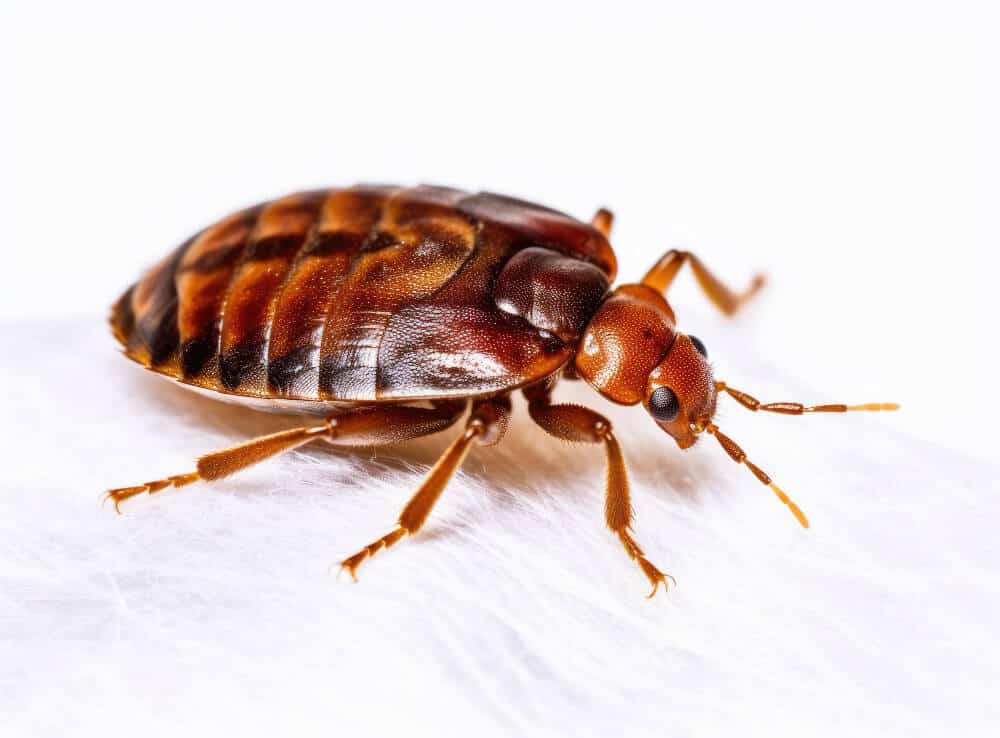Comprehending the Lifecycle of Parasites for Targeted Control Strategies
Comprehending the lifecycle of pests is a basic element of efficient pest monitoring methods. Through a much deeper understanding of exactly how pests prosper and develop, customized control techniques can be developed to resolve specific factors in their lifecycle, ultimately leading to even more successful bug monitoring results.
Importance of Comprehending Insect Lifecycle
Recognizing the lifecycle of pests is vital for developing efficient and targeted control approaches in insect administration. By understanding the various stages a parasite goes with from egg to grownup, pest control professionals can determine at risk points in the lifecycle where intervention can be most successful.
Additionally, identifying the specific ecological conditions needed for every phase of the bug's lifecycle can assist choices on environment modification or exclusion techniques to lower and interfere with the lifecycle bug populations. This knowledge enables pest monitoring specialists to carry out proactive measures instead of depending entirely on reactive therapies, causing more lasting and lasting pest control solutions. Ultimately, a thorough understanding of pest lifecycles equips pest control practitioners to customize their techniques effectively, decreasing ecological impacts and taking full advantage of control results.
Key Phases in Pest Advancement
To successfully implement targeted control approaches in insect monitoring, a vital element exists in thoroughly identifying and recognizing the essential phases in insect growth. Insect growth usually includes a number of key stages that are crucial for their lifecycle and administration. The initial stage is the egg stage, where bugs lay eggs that later hatch out into larvae. Larvae then proceed into pupae, a stage where they undertake metamorphosis before arising as adult bugs. Recognizing these phases is necessary as it helps in determining weak spots in the lifecycle where control procedures can be most efficient.

Vulnerabilities in Parasite Lifecycle
Throughout the different phases of a pest's lifecycle, unique vulnerabilities arise that can be purposefully targeted for effective control actions. One vital vulnerability depends on the egg phase, where insects are usually much more at risk to certain pesticides or biological control agents as a result of their soft outer shell, making them less complicated targets for intervention. Furthermore, the nymph or larval stage provides susceptabilities as insects undertake rapid growth and growth, needing high power consumption that can be manipulated by disrupting their food resources or presenting growth inhibitors. Pupal phases, identified by immobility and improvement, offer a home window for targeted control through physical obstacles or specific therapies that hinder successful appearance. Grown-up pests, while more durable due to their reproductive capability, can still be vulnerable during breeding or egg-laying tasks, which can be interrupted with scent traps or sanitation methods. Recognizing these vulnerabilities in the parasite lifecycle is crucial for establishing reliable and accurate control methods that properly manage insect populaces while minimizing environmental effect.
Applying Targeted Control Procedures

Applying targeted control procedures generally entails a multi-faceted method. This might include environment adjustment to make the setting less friendly to parasites, such as removing standing water for insect control or securing access points for rats. Additionally, organic control methods can be made use of, where all-natural killers or pathogens are introduced to maintain pest populaces in check.
Integrated Parasite Monitoring (IPM) approaches that incorporate numerous control actions in a worked with and lasting manner are frequently the most effective in accomplishing long-lasting bug straight from the source monitoring goals. By executing targeted control steps based on a complete understanding of bug lifecycles, bug populations can be successfully managed while lessening threats to human wellness and the setting.
Boosted Parasite Monitoring Practices
:max_bytes(150000):strip_icc()/Bed-bug-control-tips-and-tricks-2656377-e580f433c55a4a98826e429753062084.jpg)
Additionally, the unification of biological control representatives, such as natural predators or virus of insects, can aid decrease dependence on chemical pesticides and promote a much more well balanced environment. Applying physical barriers and catches can additionally belong to boosted pest administration techniques, supplying non-toxic and targeted services for bug control. Additionally, using pheromones and various other semiochemicals can interfere with pest mating patterns and communication, causing lowered pest populations gradually.
Verdict
In conclusion, understanding the lifecycle of bugs is critical for effective insect administration techniques. By identifying key stages in bug advancement and vulnerabilities in their lifecycle, targeted control procedures can be applied to decrease insect populations. Enhanced pest administration practices can assist minimize the dependence on broad-spectrum pesticides and promote more eco pleasant and lasting bug control techniques. This understanding plays a crucial function in keeping healthy and balanced ecological communities and farming efficiency.
Recognizing the lifecycle of important source parasites is important for creating efficient and targeted control techniques in pest monitoring. By understanding the numerous stages a pest goes through from egg to grownup, parasite control experts can identify vulnerable factors in the lifecycle where intervention can be most successful. Inevitably, a complete understanding of insect lifecycles empowers bug control professionals to tailor their methods efficiently, reducing ecological effects and maximizing control results.
By applying targeted control steps based on a thorough understanding of bug lifecycles, pest populaces can be efficiently regulated while reducing risks to human wellness and the environment.
By determining vital website here stages in bug development and vulnerabilities in their lifecycle, targeted control measures can be executed to decrease insect populaces.